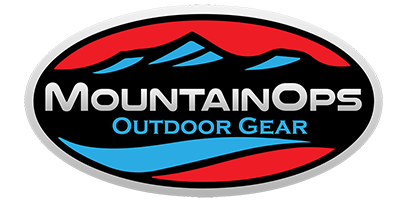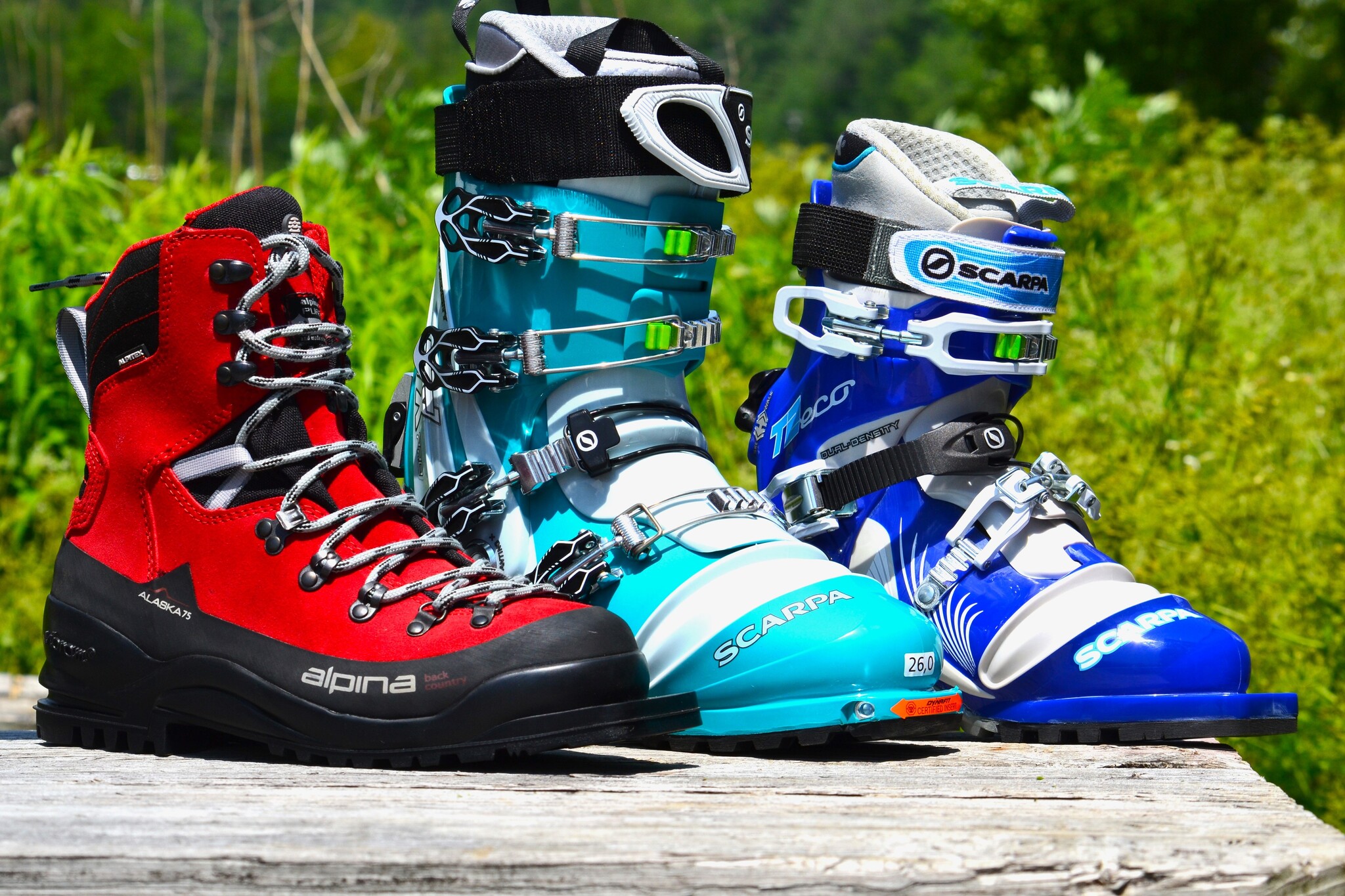75-Millimeter vs NTN
When I started tele skiing in the early 90’s, I got a hand me down pair of Merrill Supercomps boots which is used a Rainey Super Loop binding mounted on a bent pair of 204-centimeter mogul skis. At the time, I was learning and just trying to stay on my feet, without having the ski going up my nose and getting myself into the most awkward positions, trying to tame the fabled steeps at Mad River Glen. One thing that I learned quickly is that if you were not centered on your skis, you were on the ground so fast you didn’t even know how you got there. I started just trying to master the alpine turn on teles before learning to drop my knee. Once I figured that out, I just kept at it, putting in the mileage and always playing catch up with my fast friends on alpine gear, especially on powder days. After many face plants and gut checks, I finally figured out the turn in powder, and have been hooked ever since.
Merrrill Supercomps back then were half leather and half plastic, a major technology breakthrough from the old tele leather slippers that many freeheelers called state of the art boots. From there leather tele boots morphed to all plastic, and that changed the game for aggressive skiing in and out of bounds, overall boot durability, flex and performance. I skied a few versions of the Supercomps and really like them, but the leather would eventually break down and leak, causing my feet to freeze.
I then moved up to the all plastic Scarpa T-1’s, which offered a stiffer flex, higher cuff, 3 buckles and a real power strap. All of this new technology gave me new found power to drive my skis. While boot technology was changing for the better, the bindings world always seemed to be playing catch up. I was continuing to break many different bindings along the way and ripping my fair share of bindings off the skis, many times in mid-turn. If I was not breaking binding cables, I was severing toe pieces, maxing out cartridges and eventually, wearing down the duck bill from the three pins destroying the undercarriage of my boots. Frustration was growing, especially in the backcountry, where binding failure was becoming normal, and I was always carrying spare parts as well as wire and duck tape to patch my gear back together so I could ski out from being deep in the woods in the Green Mountains.
When it came time to get a new pair of tele boots, NTN was first coming out. I had seen a few Stowe patrollers in them and got some pretty rave reviews and positive feedback. They were easy to get in and out of, had great power and feel on the snow, while wear and tear along with breakage was minimal. I was skeptical but intrigued. The boots and bindings looked heavy and clunky and there was no heel cable. You just stepped right into the binding. No more bending over to attach the cable to your heel, no more adjusting cartridges after they stretched out. Was this for real? There was only one way to find out. I was all in and I was pleasantly surprised by the results. I went with the Scarpa TX Pro, which was just about the same weight as my old Scarpa T-1’s, but fit my foot even better. The one thing that I noticed right away was that NTN puts your connection to the ski right under the ball of your foot, where you bear your weight and center your balance whenever you're on your feet. This is a far better spot from which to steer and control your skis and offers a more solid lateral connection. This was much better than that duck bill extension of a semi-flexible boot sole way out in front of your foot's balance point. Even the prehistoric wooden tele skis that you saw the Norwegians skiing on hundreds of years ago connected to the foot by a leather strap over the ball of the foot, and with another leather = heel strap from that for lateral control. It makes sense to move it back from the toes to the ball of your foot. The Norwegians had it figured out right from the get go.
The NTN setup is quite different feeling from the 75-millimeter gear and with amazingly better ski control than all my previous 75-millimeter gear. Right away it feels like the amount of control and foot steering is a game changer. It did take some getting used to, but once I figured it out there was no going back. The ease of step in, the power and stiffness of the boot and binding interface gave me the ability really make precise turns with great edge control, particularly on hard pack and ice. No lateral play in the boot and binding that I used to have to deal with 75-millimeter And as an added bonus, no more left and right skis! You can switch up your skis once the edges burr up or dull down a bit, saving money on ski tunes and keeping the life of your skis intact that much longer rom having their bases and edges ground down. And with free pivot and now tech toe binding options, touring is now more efficient than ever before on tele skis.
Now old school leather heads or 75-millimeter purists will always be nay sayers to NTN. They don’t like change, period. It’s the weight, the stiffness, the change of flex/balance point under foot with NTN. Its cheating they say, much easier to learn, just like the naysayers used to say about “shaped” or fat skis. I’m all for being a throwback and know how difficult it really is to make a nice tele turn on leather boots and straight skis. But the fact of the matter is, 75-millimter tele boots are becoming harder and harder to find, with many companies not even offering 75-milimter boots anymore in their line ups. You can start combing Craig’s List, all of the Telemark web sites, and garage sales looking for your coveted 75-millimeter boots. What you will find is that it’s quite the daunting task to find new boots, let alone boots that are in good, used shape.
So, the choice is simple. There is no choice. Go with NTN and don’t look back. It’s far and away the best way to tele with the most options to choose from when buying new equipment. Change is good. Expand your horizons, get out of your comfort zone. Ditch the wool and gaiters for Gore-Tex too while you’re at it.
Telemark is certainly not dead, but 75-millimeter is just one nail in the coffin from being 10 feet under.






